Starting seeds to grow your own seedlings has a lot of benefits. It’s cheaper than buying transplants, you can grow exactly the type and variety of plants you want, and you can grow them on your own schedule.
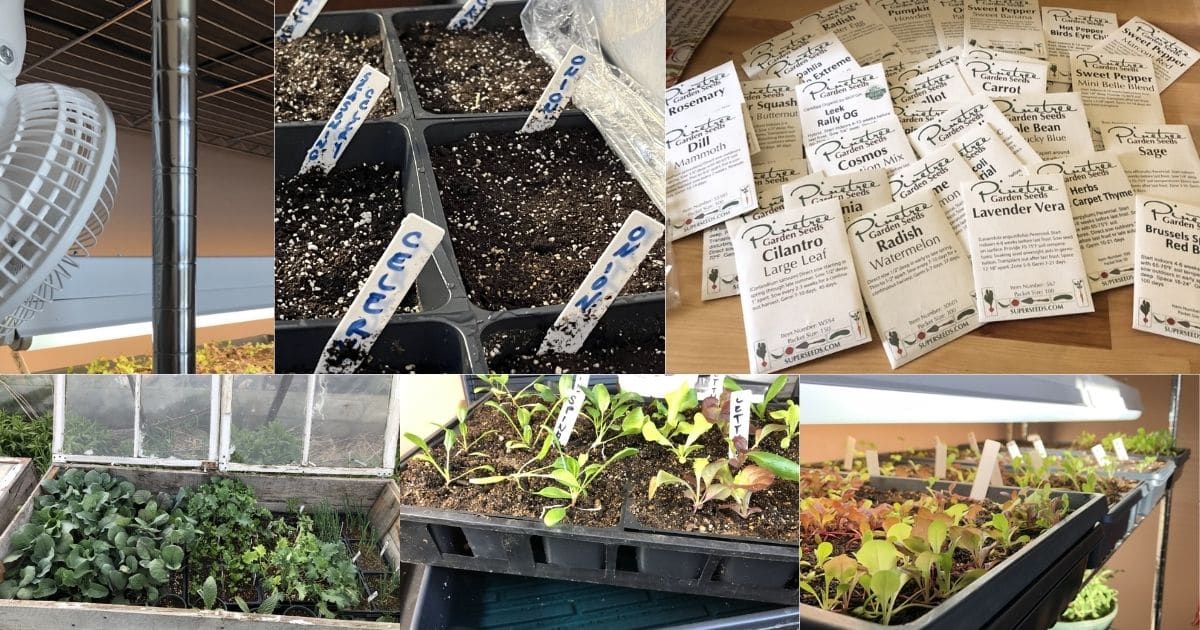
You also will not need to worry about what the local garden center does or does not have, or if they might sell out of what you need. Growing your garden plants from seed gives you the most control over your garden from start to finish.
But there is a learning curve involved when you first learn to grow your own plants from seed. It’s an interesting learning curve, and it is not too hard if you have some good resources, but it is a learning curve, nonetheless.
Mistakes are not uncommon, even for experienced seedling growers. If you know what the more common seed-starting mistakes are, you can avoid them. Let’s take a look at
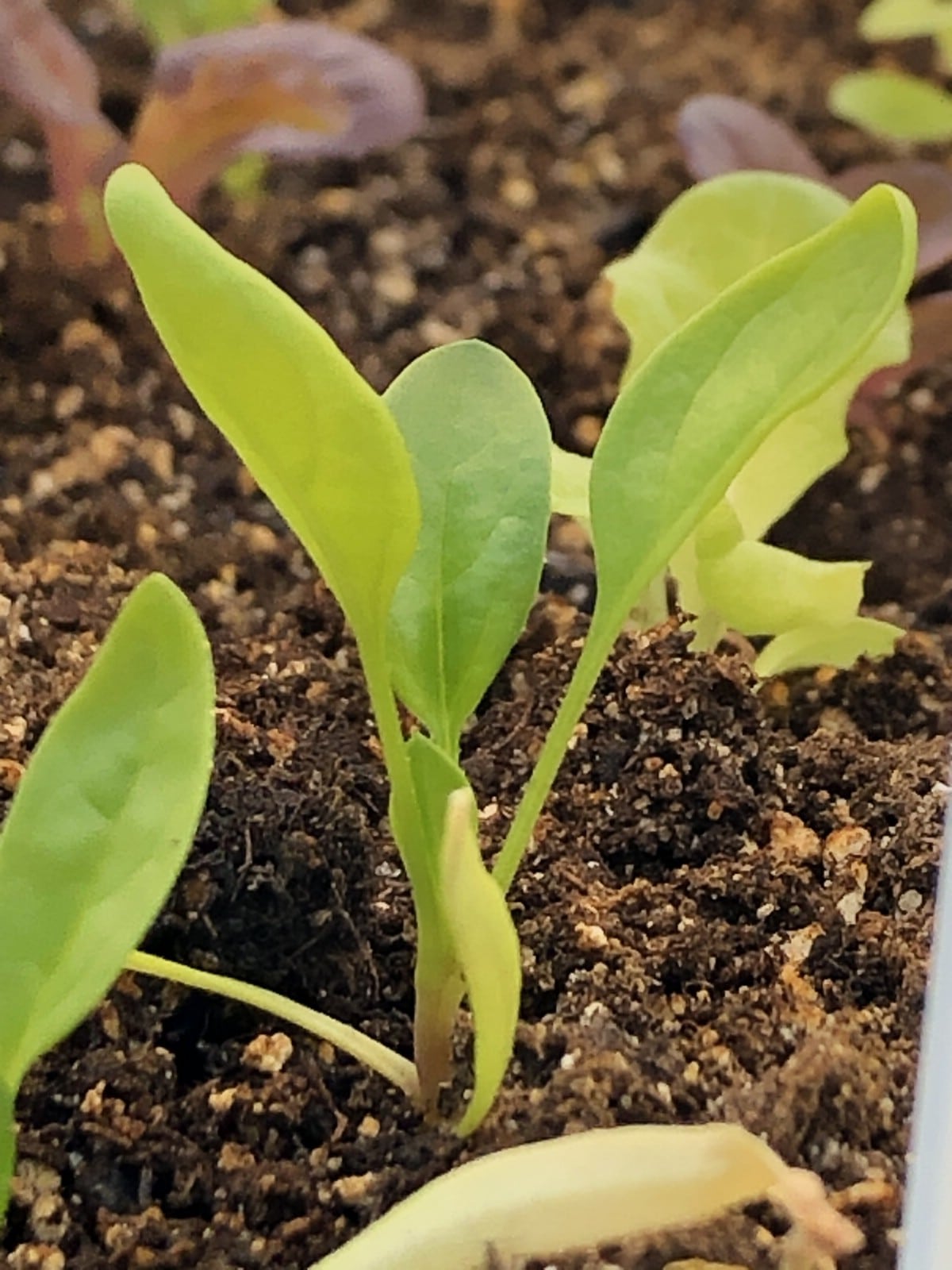
Jump to:
- 1. Starting too late
- 2. Not starting seeds on their own schedule
- 3. Wrong germination conditions.
- 4. Impatience
- 5. Light management
- 6. Water problems
- 7. Inviting damping off disease
- 8. Starting things that should be direct sown
- 9. Not hardening seed off before planting outside
- 10. Being afraid of starting seeds yourself!
1. Starting too late
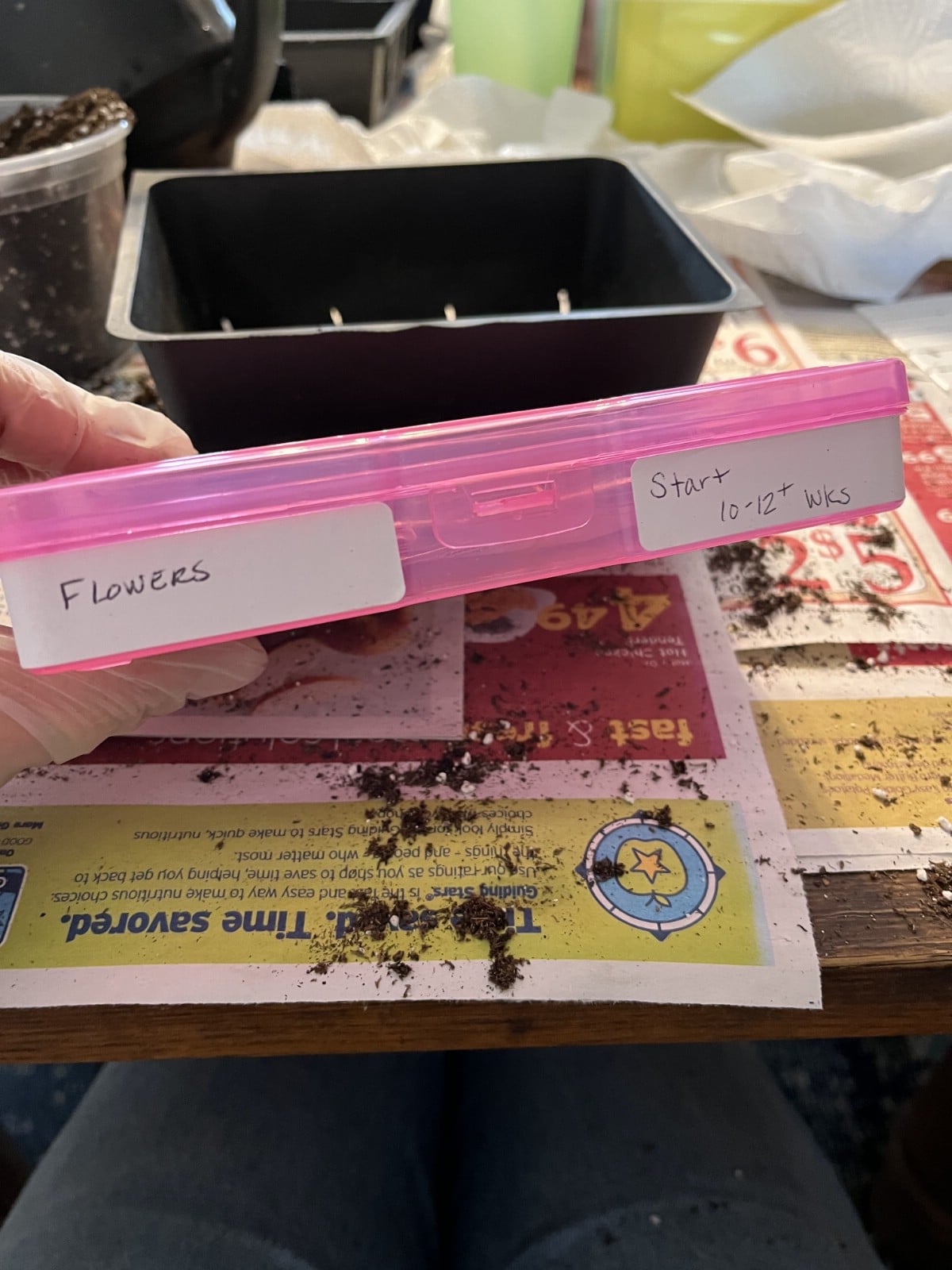
This one is simple. And pretty self-explanatory.
If you wait too long to start your seeds, your plants will not have enough time to germinate and grow to a large enough size to survive transplanting to your garden. The reason that we even start seeds indoors is because the climate in many, if not most, areas is too cold, and the growing season is too short to start the seeds in the ground and have enough time left for those plants to grow to their full productive peak. For many types of tender vegetables and flowers, if you do not start them indoors in the winter and/or if you do not plant started plants, you will not get a crop (or bloom).
The shortest amount of time seeds will need is four to six weeks before they are due to be planted outside. That timing is only for a very few, select vegetables; most need more time. We’ll talk a little bit more about this later in this article.
This begs the question, though—can you start seeds too early?
The short answer? Not really. Not in most cases (there are exceptions, of course). Starting early does present some challenges and does require more investments of time and money for supplies. If in doubt, you’re better off starting too early than too late.
2. Not starting seeds on their own schedule
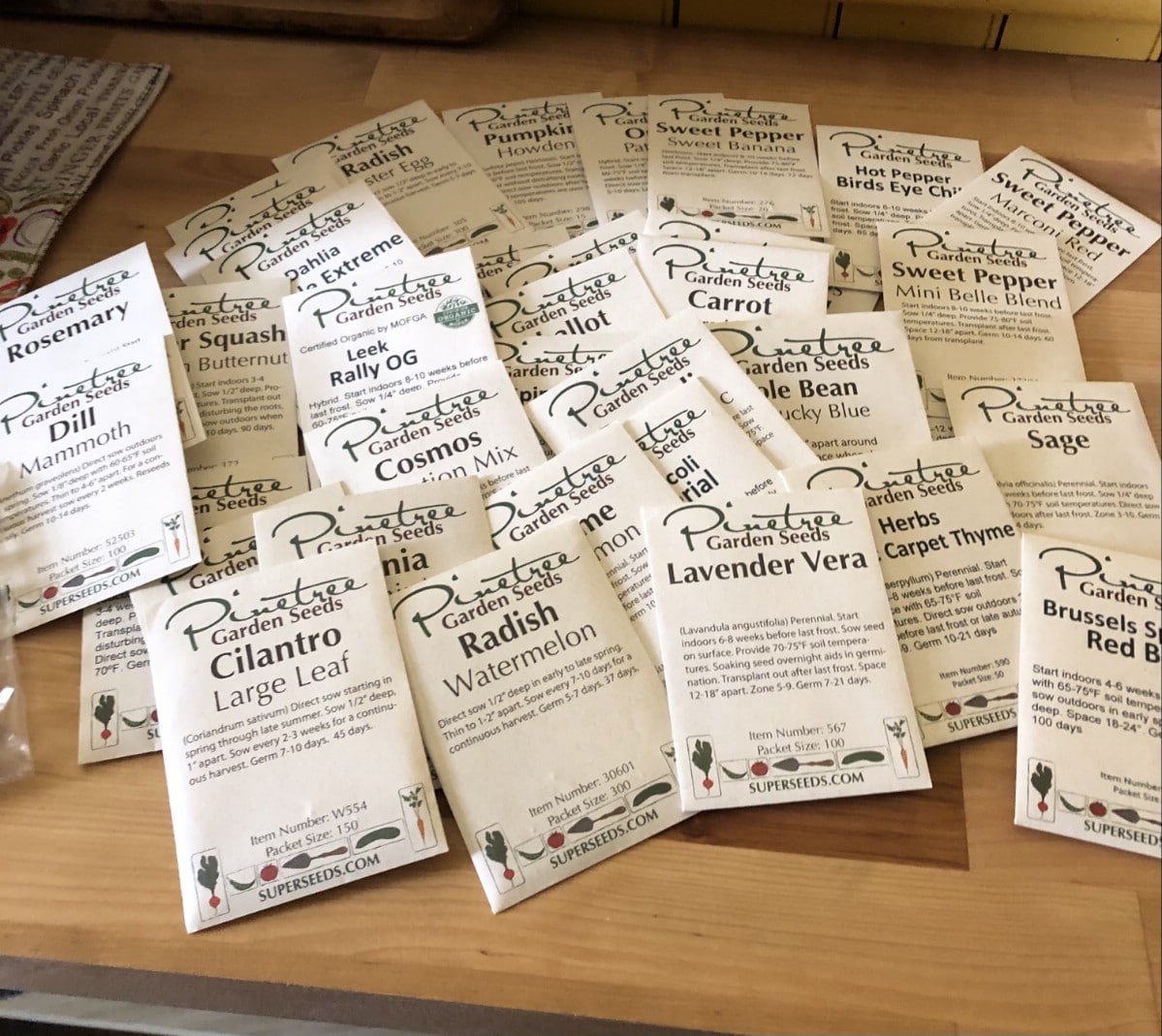
Not all seeds need the same timeframe to start and grow into good, viable transplants.
Some seeds have a long germination period of up to four weeks. Long, slow germination periods are common for things like onions and plants in the allium family, strawberries, celery, and others.
Some seedlings grow very slowly after they germinate. This is common for herbs and also for many flowers. Pepper plants are famous slow growers, too. There are, of course, others.
Some plants, especially those with larger seeds, grow very fast and don’t need much time at all.
There are also some seeds that will germinate perfectly fine, but the plants do not do well when transplanted, or they do not do well when they get too rooted in their pots. Squash, pumpkins, and sunflowers are a few we can name here as examples. For these plants, you want to limit the amount of time that they are in those pots before transplanting.
The most common amount of time that it takes for seeds to germinate and grow to transplant size is between six and eight weeks before your planting date. This length of time will cover the vast majority of vegetable plants and many flowers.
Do be well aware, though, that some of the things you will want to grow will need different amounts of time—some may need to start up to 12 or 16 weeks before your last frost and/or planting date. Some will be as little as four.
To make life easy, split your seed starting into three sets and group the seeds into the closest and most appropriate time range (a difference of a week or so won’t make or break you). Plan to start seeds at 12 weeks (if necessary), eight weeks, and four weeks for those that don’t really want to be potted for long.
3. Wrong germination conditions.
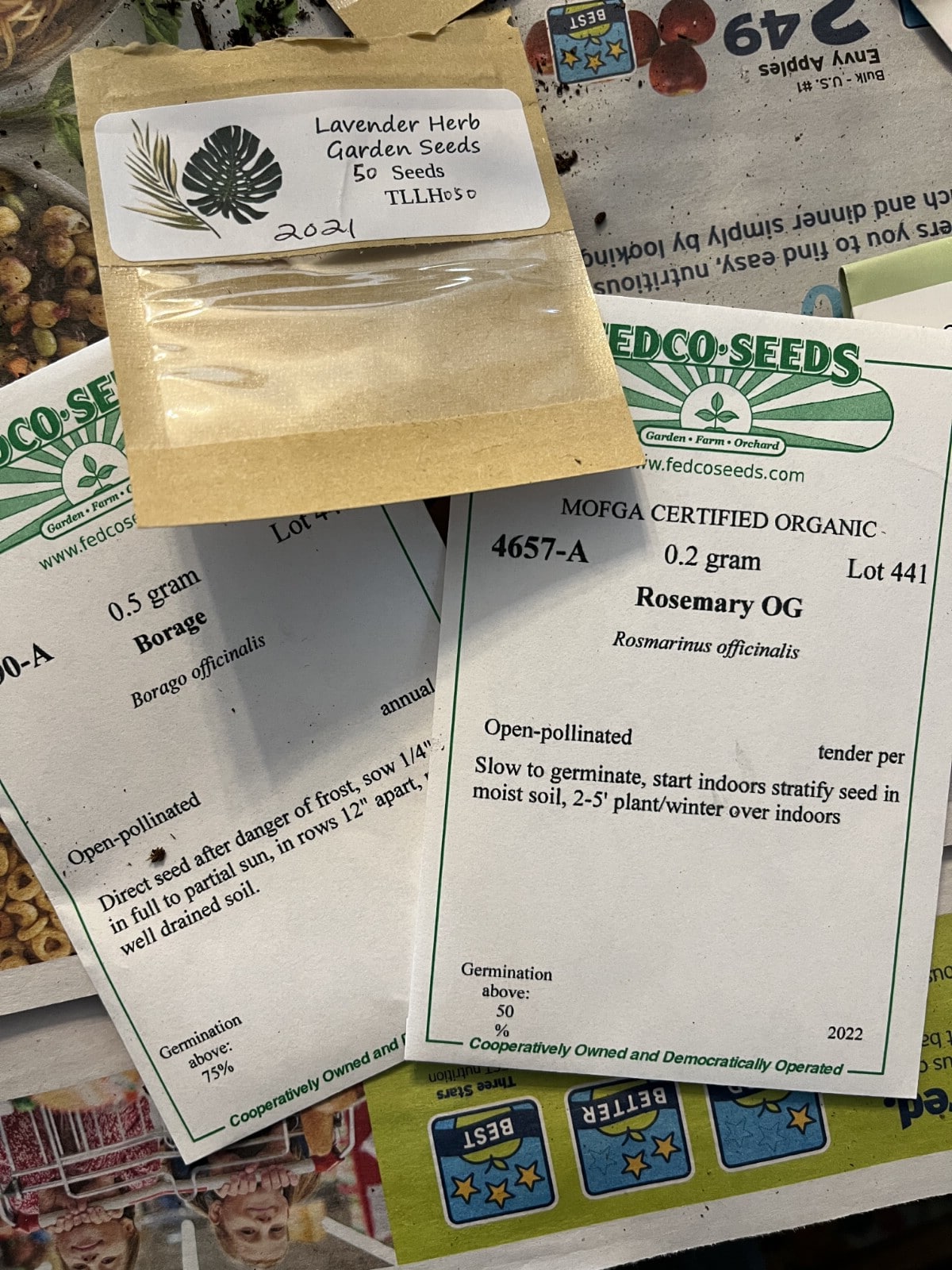
Although germination conditions are pretty standard for most seeds, there are some differences between different types of seeds. At the very least, you want to meet the most common germination requirements for seeds.
The most common germination requirements are seeds planted in soil in pots or trays to the recommended depth, covered in soil, and kept at a steady temperature of about 70-75 degrees Fahrenheit (21 C). If you manage your seeds under those conditions most of them will germinate, and they will germinate in the expected amount of time for that type of seed.
But as we said, there are always exceptions. You should be aware of them.
Some seeds need light to germinate. They want to be planted on top of the soil.
Some need dark. They need at least a soil covering but will appreciate a dark space until they sprout. You can also use a solid covering like a piece of cardboard or a layer of newspaper.
Even though most seeds will germinate around 70 degrees, some will do better if the soil itself is a little warmer (in which case a seed heating mat can be helpful).
Some will do better at cooler temperatures.
Some need a long period of cold stratification to germinate well (or at all). If you’ve ever struggled to germinate lavender seeds, this is a perfect example.
Germination is all about recreating the conditions that seeds experience in nature and setting off their natural triggers to tell them it’s time to grow. It’s best to look up individual seeds’ germination requirements before you start. Seed packets and seed catalogs should give you this information, but if that information is not provided, a web search will help you.
If your seeds are already started and they are struggling to germinate, look up their germination requirements now and see what you can fix to help them along.
Fortunately, most seeds will eventually germinate even if conditions are not quite perfect—they just might take longer to do so.
4. Impatience
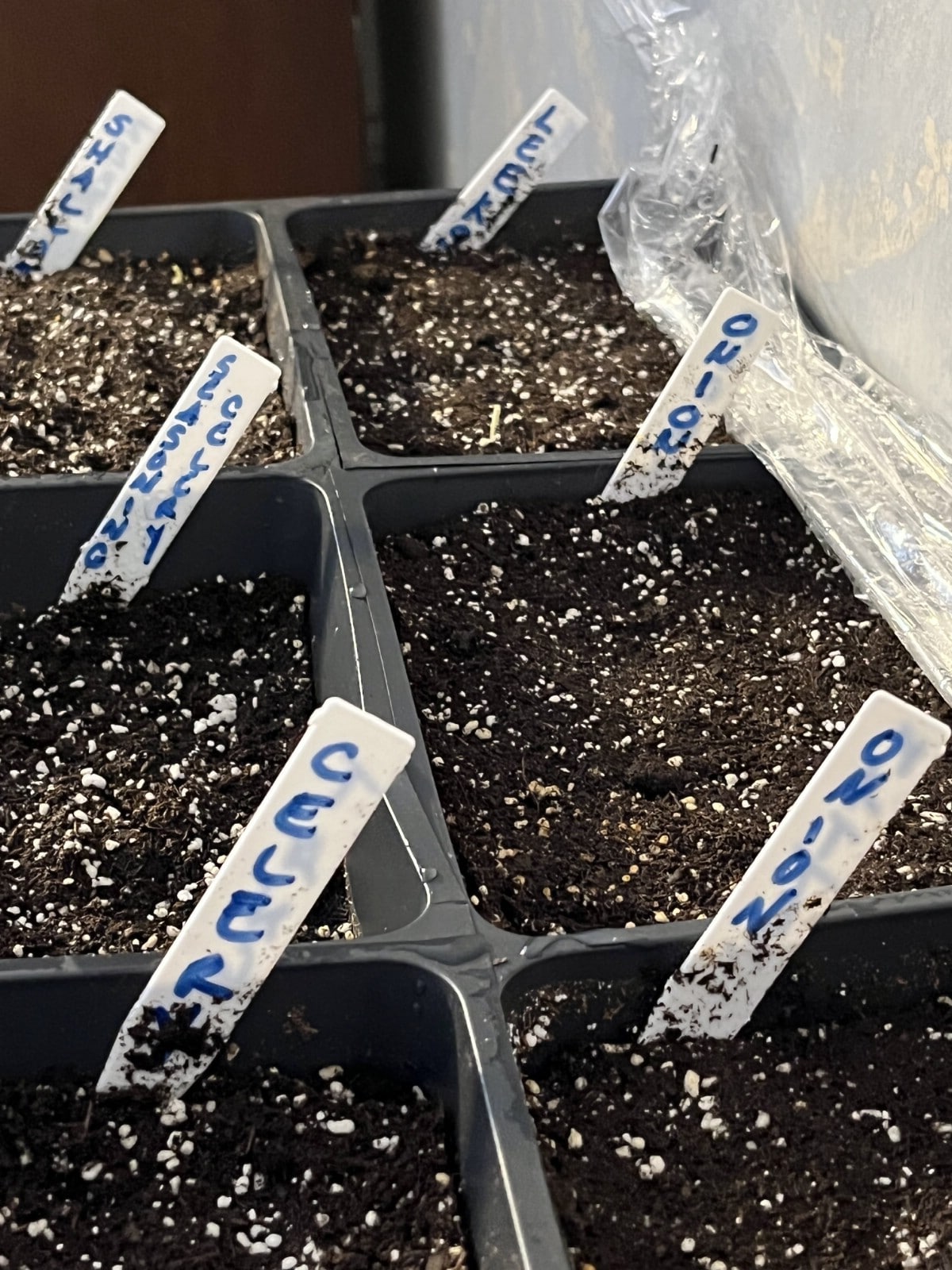
One mistake seed starters often make, especially new seed starters who don’t have the benefit of prior experience to guide them is giving up on their seeds too easily. By that, we mean too early.
Even though you start your seeds in groups, they will all have their own natural timeline for germination and growing. Sometimes we start to worry when we see lettuce seeds sprouting in a matter of days while our pepper seeds sit there doing nothing for weeks.
Don’t make the mistake of thinking that your seeds won't sprout just because they are taking longer than another type of seed. The first thing to do is to check the seed’s packet or your seed catalog and see how long they should take to germinate. Wait at least that long before you worry.
In fact, don’t give up on your seeds if they are taking an extra week or two to germinate. Sometimes that just happens. Or sometimes something is a little off in the germination conditions. Double-check preferred germination conditions as we talked about above, adjust what you can, and give your seeds a little more time before you decide to trash them. Sometimes a little patience is all we need.
5. Light management
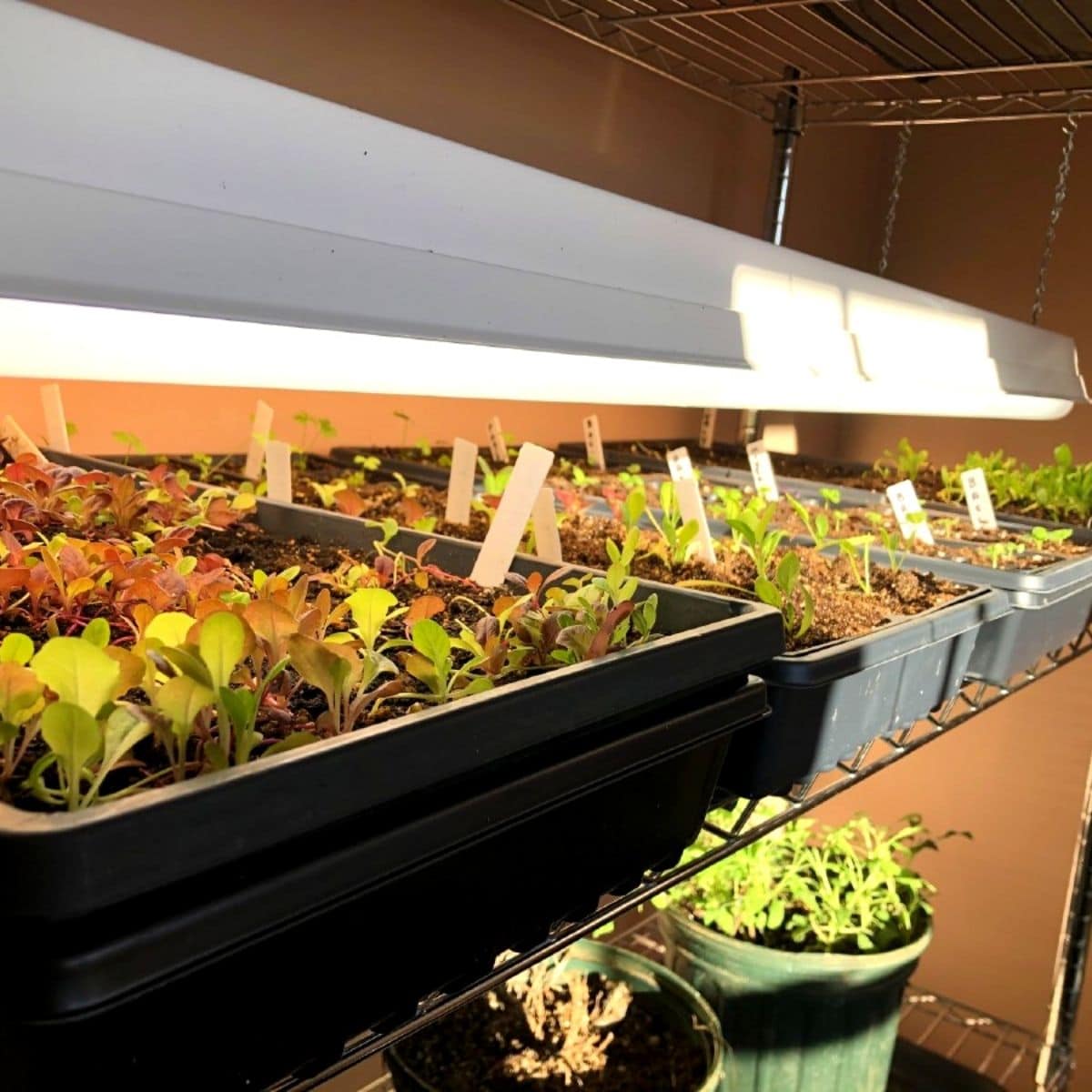
One of the biggest, probably the biggest mistake of growing plants from seed, is growing seeds that become weak-stemmed and leggy. This happens when the light situation is not right.
Remember that seeds in the “wild” outdoors get many hours of long, strong sunlight from the very first time they pop their heads through the surface of the soil. They get this light for eight or ten hours per day. Indoors we can mimic these light conditions and get pretty close to the needs of those seeds, just like they are outdoors.
When we do not supply enough supplemental light the baby plants try to reach to find it. They grow long, thin, stems that cannot support the long-term growth of the plant. If the condition is not corrected quickly enough, they will often lay over or die. Even if the plant lives long enough to be moved outside, the damage is usually done; the weak stems will break and cause plant death once they start encountering wind and natural weather.
There are a few reasons why plants get weak and leggy:
- They are not given any supplemental light, such as grow lights.
- They are not given full-spectrum light (like what they would get from the sun), so they continue to stretch to find it. Normal household lights are not enough.
- The lights are placed too far away from the seedlings. Lights should only be two to three inches above the tops of your seedlings.
- The lights are not on for long enough. Give your seeds at least 10 hours of supplemental light per day. A longer period of 12 to 16 hours is okay, too, because it helps make up for the lower intensity of light, as compared to the strength of the sun.
The best way to avoid this problem is to plan ahead with a good seedling light setup . If you have already started your seeds and they are starting to look leggy, you can often correct the problem if you get them under good, close light quickly enough.
6. Water problems
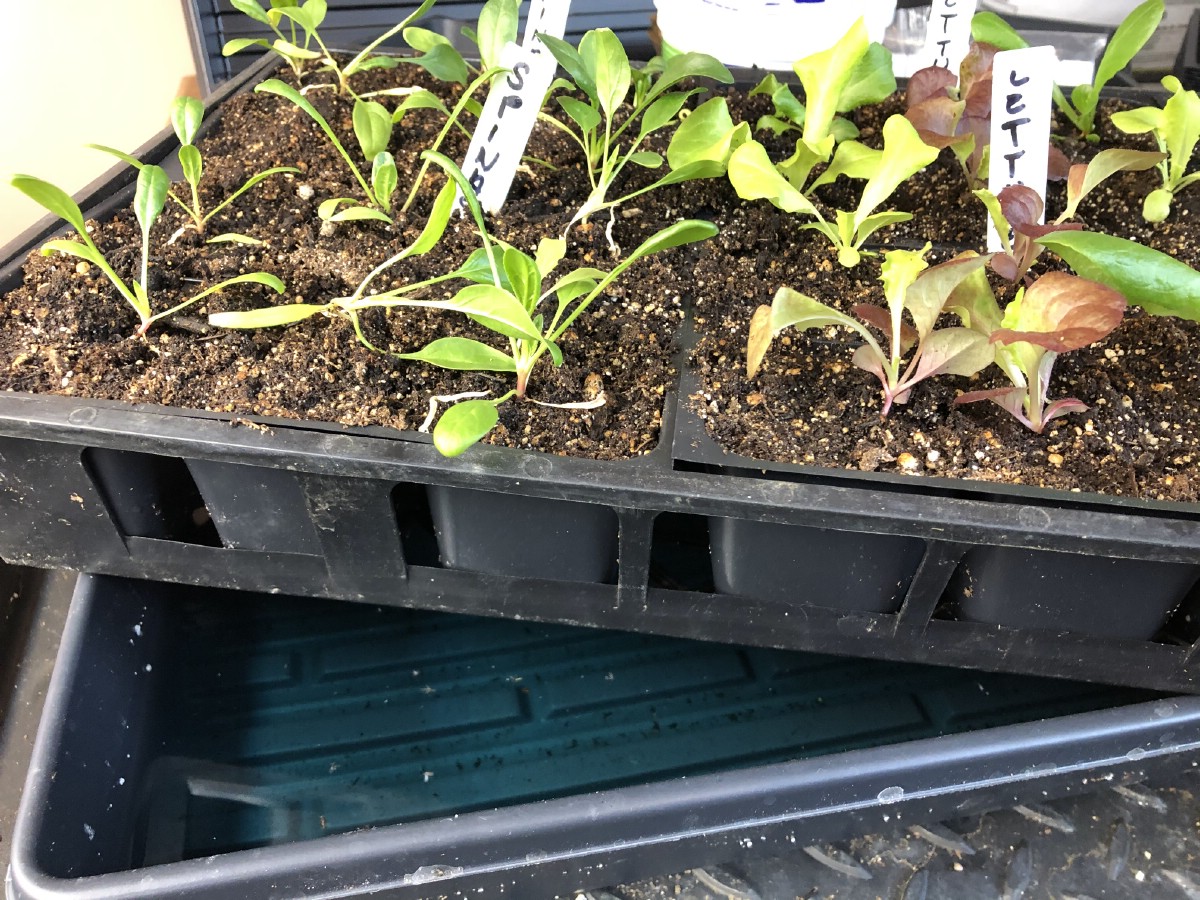
Water management for seedlings is a balance. If there is too much of an imbalance one way or another, seeds fail to germinate, and plants will die.
Overwatering is just as bad for seeds and seedlings as underwatering; sometimes it is even worse. Here are some of the most common mistakes people make when it comes to the proper watering of seeds and seedlings:
- Letting soil dry out between waterings.
This is most important at the germination stage because small seeds cannot hold enough water on their own to survive and won’t revive once they’ve dried out if they’ve already started the germination process. You shouldn’t let seedlings dry out completely, either, but they tend to survive it better than sprouted seeds because they are holding some of their own water. - Overwatering.
Overwatering robs roots of oxygen and leads to root rot, death, and disease. Only water seeds and seedlings when they need it—like when the top of the soil just starts to dry out. - Underwatering.
Underwatering may sound like it’s the same as letting soil dry out, but it’s really not. It’s more like when you water the plants, but you don’t give them enough to thrive. This can cause dried leaves, weakness, and death. - Poor watering schedule.
A poor watering schedule can be a schedule that is too often or not often enough. This happens when we water on our own set schedule, instead of based on the needs of the plant or soil. Different plants have different water needs. Different soils retain water at different rates.
Your plants will even have different water needs at different times in their growth—they will not need much watering as seeds, but as they get bigger, they will use more water and therefore will need to be watered more frequently.
Keep in mind that the conditions of your home or growing area will make a difference, too. If your home is dry your plants and soil will dry out more quickly. If it is more humid, they will stay moist longer.
The key to a good watering schedule is to let the pots and plants dictate, not a rigid schedule, and not because some instruction said to water every two or three days. These are general guidelines that may need to be adjusted for your plants.
7. Inviting damping off disease
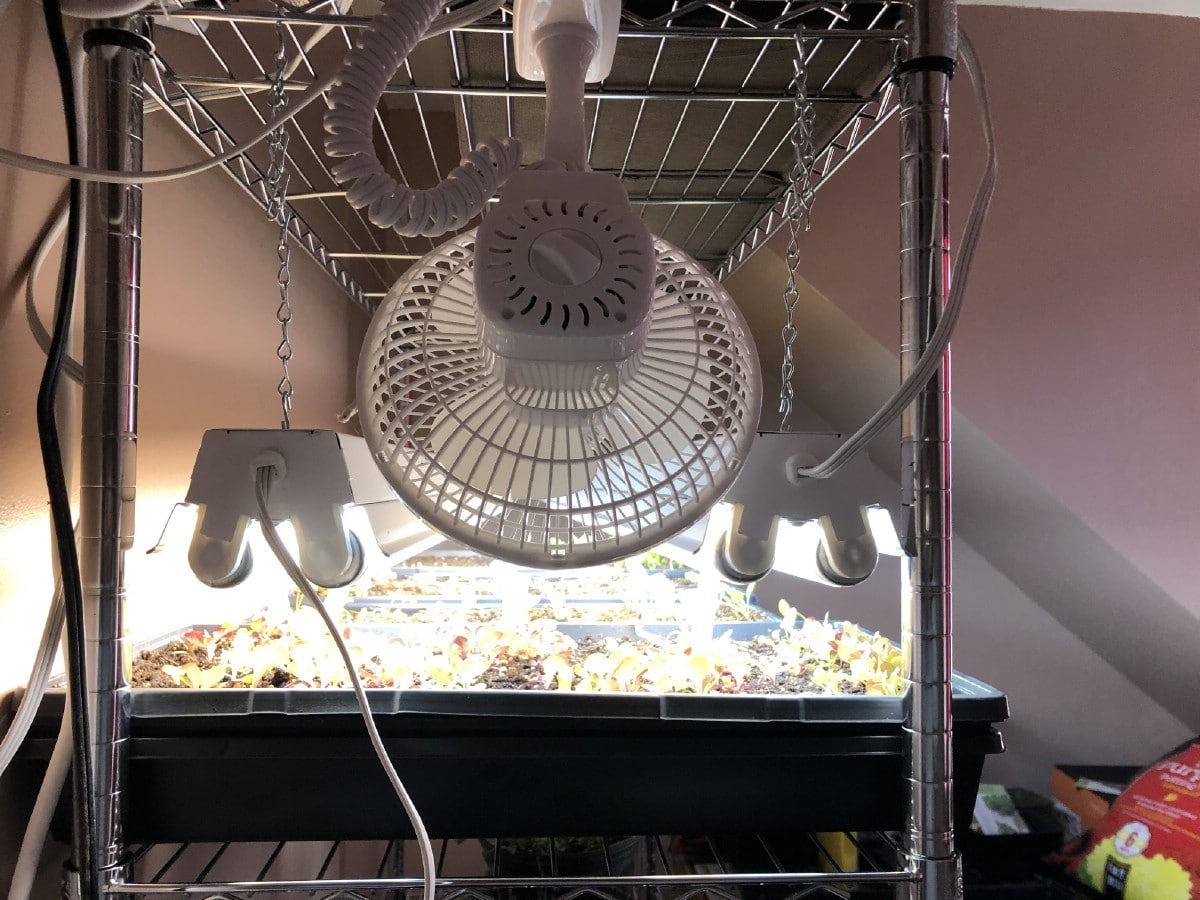
If leggy plants caused by light problems is the number one problem for seedlings, damping off disease might very well be number two. And it’s a close second to the first. It also is more common in leggy-stemmed plants.
Damping off disease is a common fungal disease of seedlings that is caused by too much moisture. It is characterized by brown spots low on the stem that get larger until the stem starts to rot away, and the top of the plant bends and breaks off. This means death for your seedling.
The only real way to treat damping off disease is to prevent it. The way to prevent damping off disease is to pay good attention to water management so that soil and seedlings are not kept wet. Also provide good air circulation.
Here are two good ways to do the above:
- Always water your seedlings by setting the pot or pack in a container of water (bottom watering) and leave them there only until the top surface of the soil darkens with moisture.
- Have a fan near the seedling trays to helps circulate the air. This will also help the stems to grow thick, stocky, and strong, and will help to prevent leggy growth, too.
8. Starting things that should be direct sown

Some seedlings fail because people start plants inside that don’t have much, if any, business being started indoors. There are seeds that do much better if planted directly in the ground (direct-sown).
There are also seeds that do not transplant well, should not be started indoors, and should not be transplanted. And then there are seeds for which it just doesn’t make good sense to start them indoors, because they start off and grow better outdoors. Starting these seeds inside only creates more work with not very much benefit (if any).
For a lot of these types of seeds, the very minimal time that you gain by starting them indoors is lost when they experience transplant shock and get stunted. When that happens, it can take weeks for the transplants to catch up, and that time “gain” is lost, or worse.
Though some people do it, there is not much benefit, and some significant risk, to starting root crops indoors. These include carrots, beets, turnips, parsnips, and other things that grow in the ground. The benefit of starting pea plants indoors is negligible. Peas do well when direct-sown and can be planted very early, anyway.
Other plants that may do okay if started inside are cucumbers, squash, and pumpkins, but they often don’t do very well in transplanting so you may find it just as beneficial or more so to sow them directly in the ground.
There are also many flowers and ornamentals that do not do well as transplants.
Whatever you are growing, check their growing and sowing instructions to see if they will have a problem with indoor starting or transplanting. Instructions may say “not recommended” under the “start indoors” section or they may say “direct sow only” or something similar.
9. Not hardening seed off before planting outside
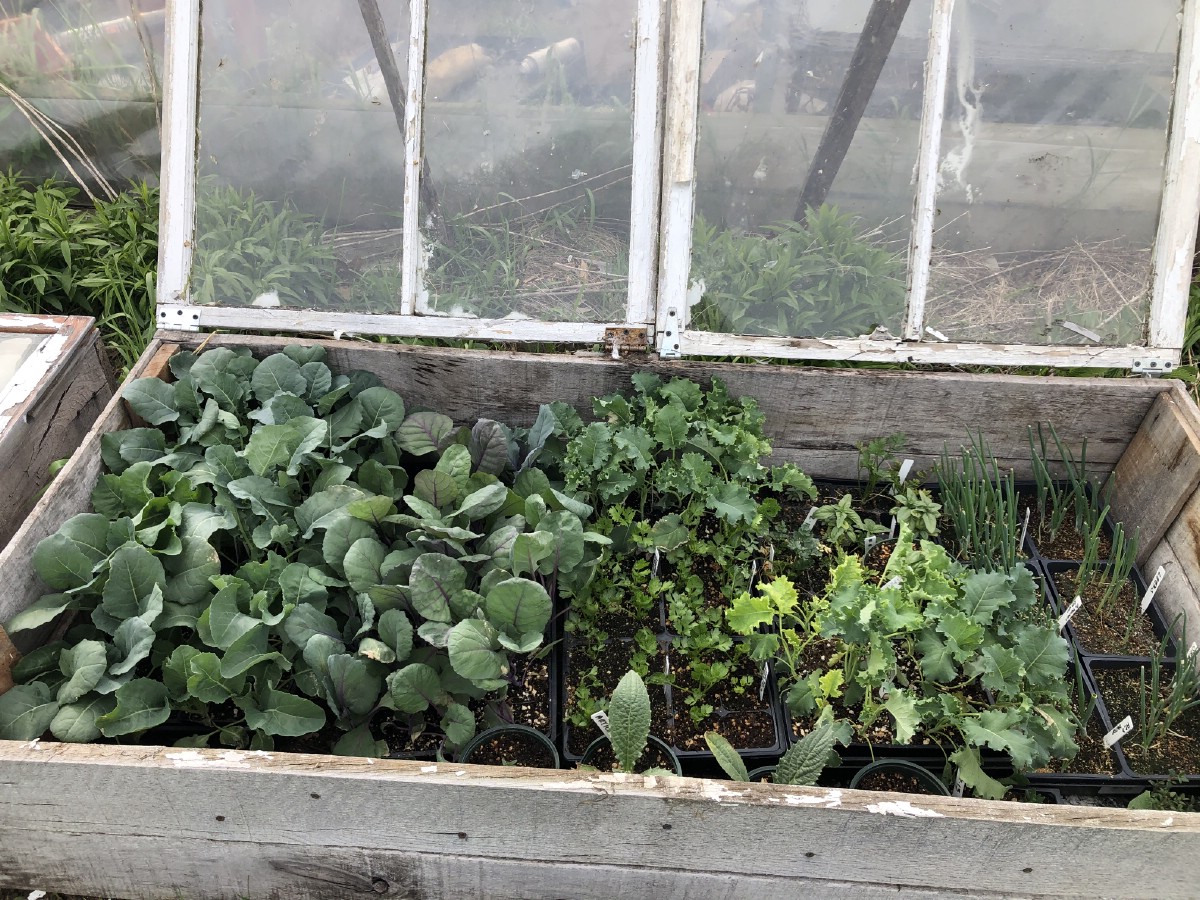
Hardening off is a process that prepares pampered seedlings for life in the great outdoors.
The indoor growing environment, even in a greenhouse, is one that is very easily controlled. It is a lot different than the variable life plants experience outdoors. Outside, temperatures fluctuate, the wind blows, it rains, water varies, and the sun is hot and long.
Before you transplant your seedlings outdoors, you need to help them get used to this new kind of stressful, unpredictable life. They need to be able to withstand the elements. Plants that are not hardened off often wilt, break, and die.
The way you do this is by putting them through a process of hardening off. This takes about two weeks and should be done during the two weeks just before you plant the young plants outside. You can find full directions detailing how to harden off your seedlings here:
10. Being afraid of starting seeds yourself!

You are sure to fail at seed starting if you never try. Yes, it is true that this is a skill that needs to be learned as you go, but it is also true that this skill can be learned. And it is certainly worthwhile to learn it.
It is reasonable to feel overwhelmed when you are learning a new skill, but you should not let that keep you from learning it. The odds of success are in your favor. They are especially in your favor now that you have taken the time to do some research and you know what the most common mistakes are when seed-starting.
Learning from the common mistakes others have made will put you ahead in the game. Armed with this knowledge, you, too, can grow healthy, beautiful transplants for your gardens!

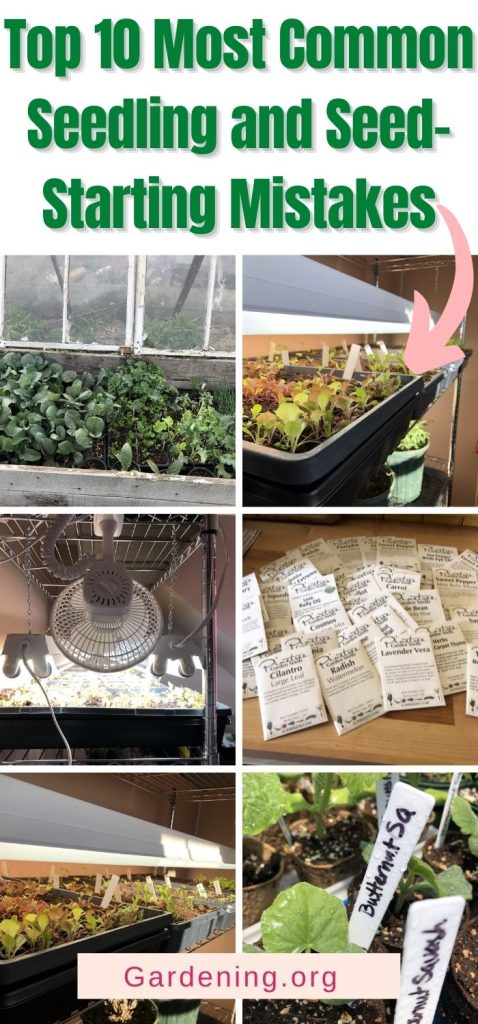
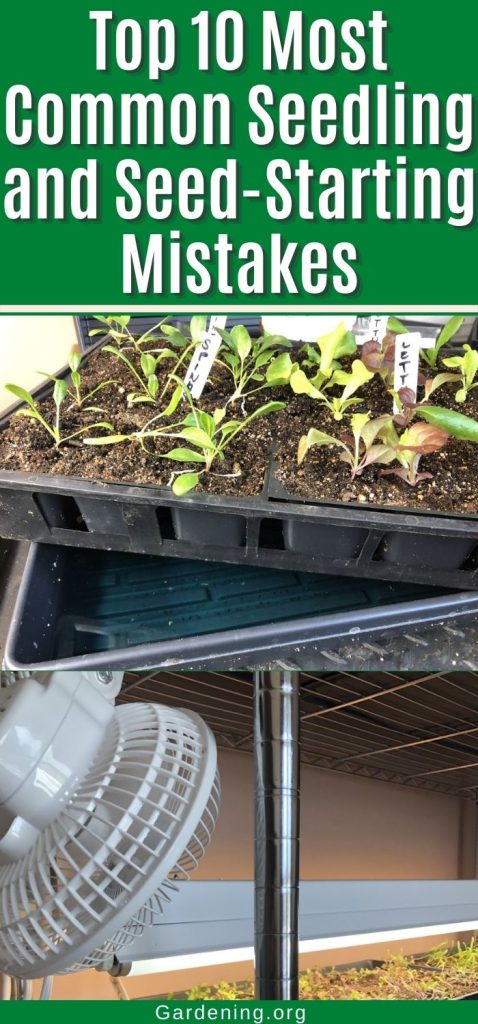
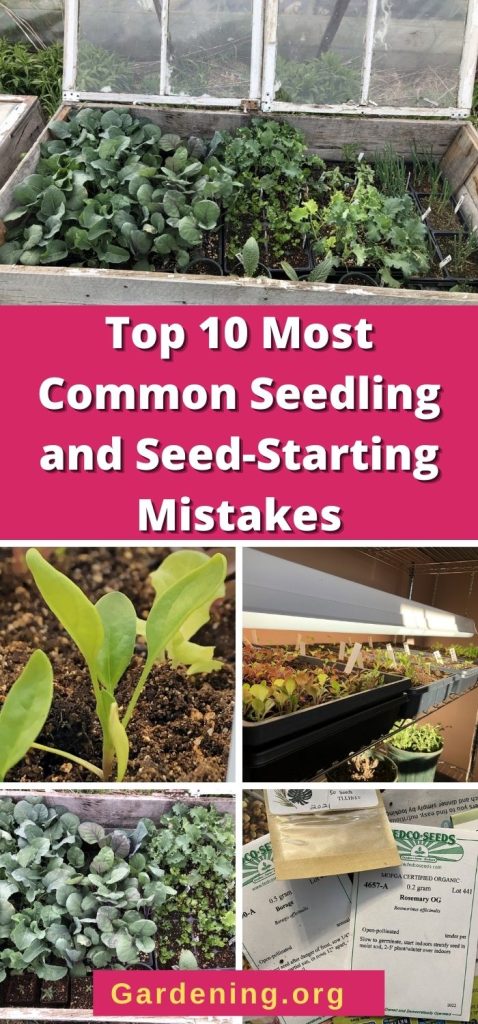
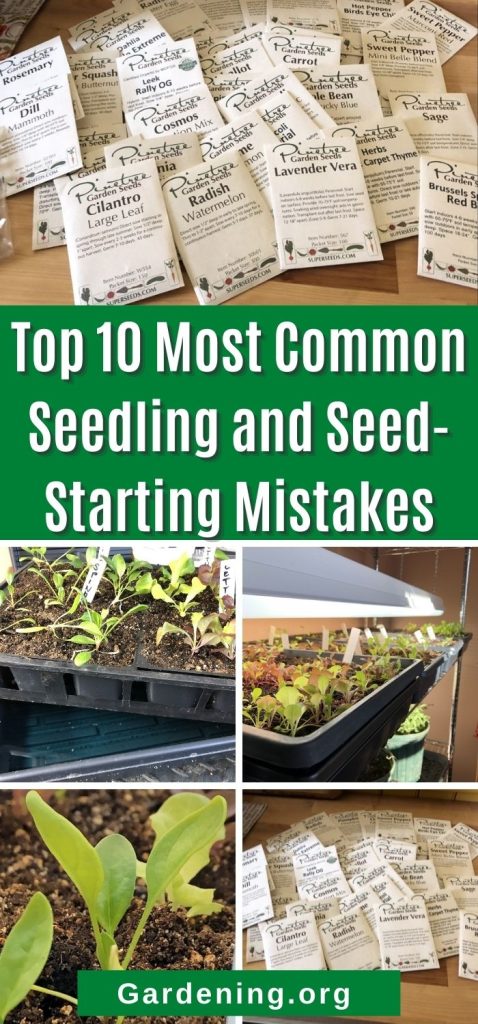

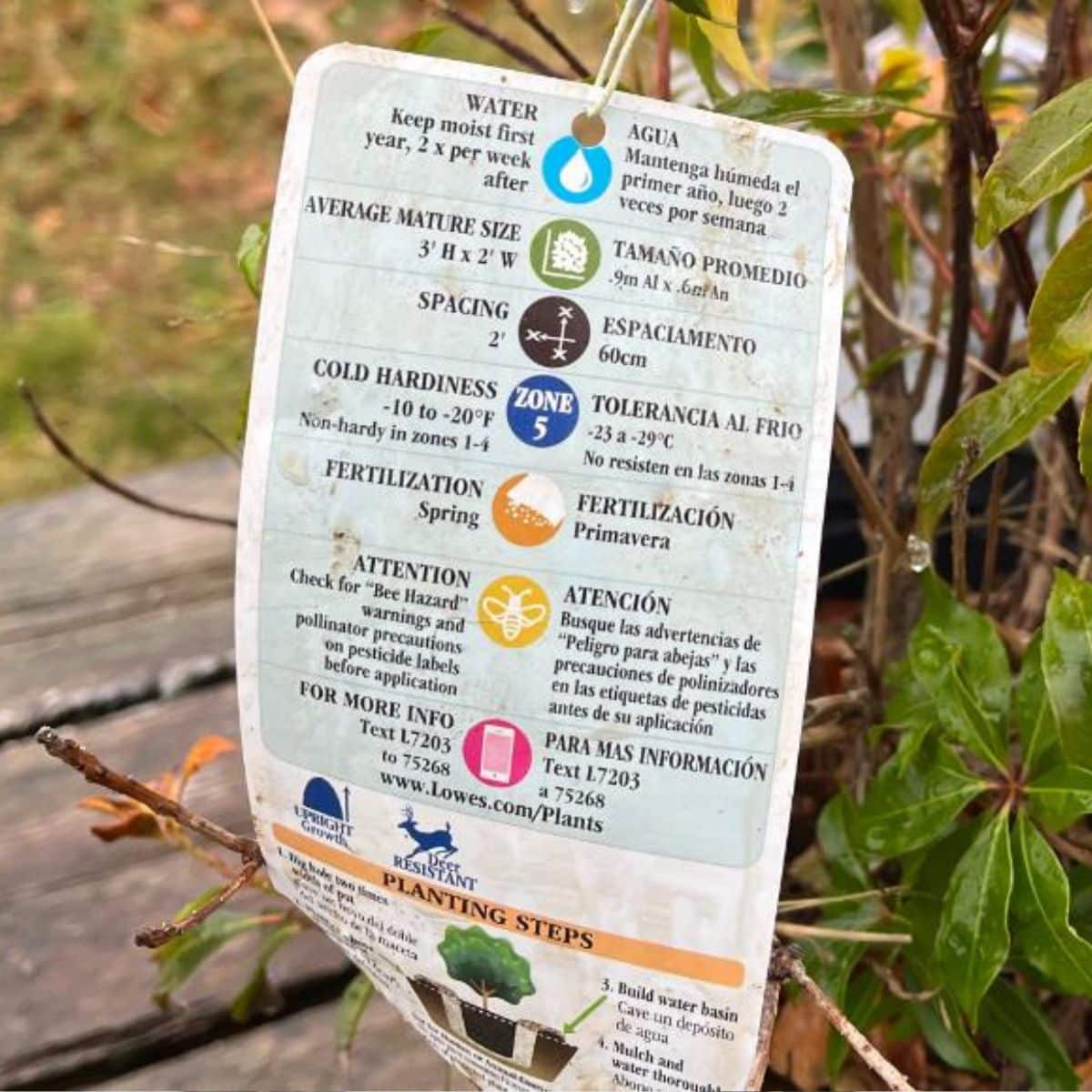
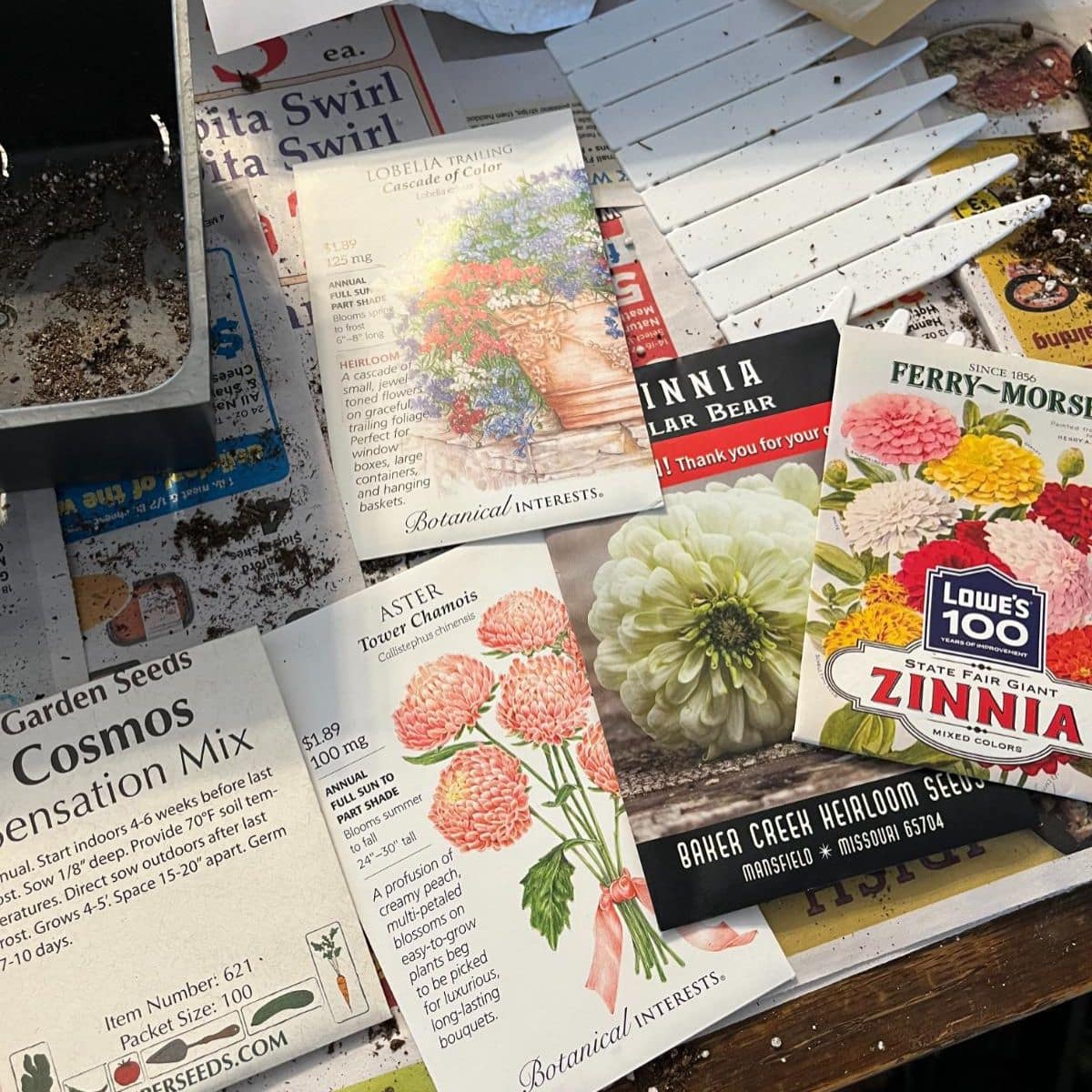
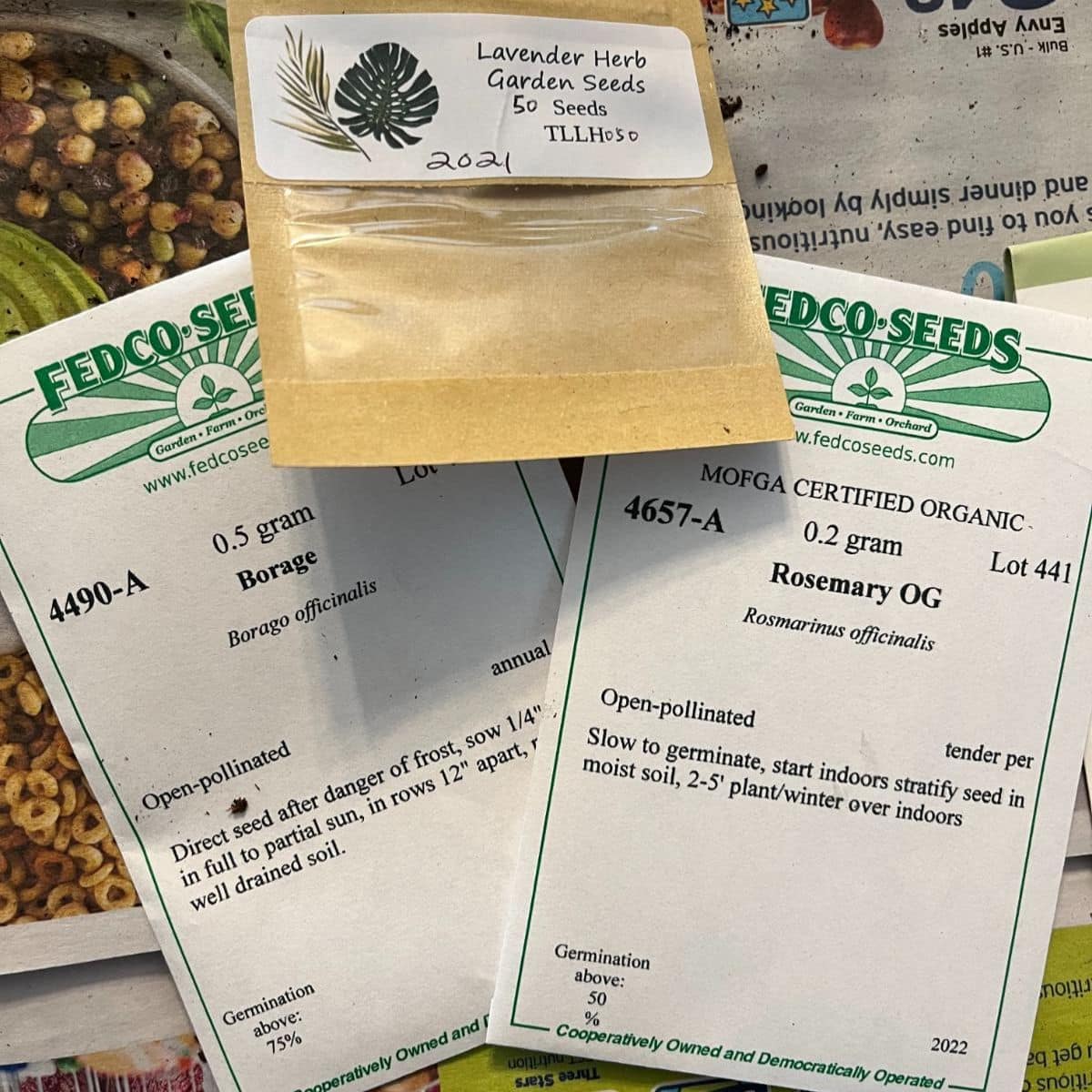
Annette Harbajan
Thank you for all the gardening tips. I would like to continue to get more information since I will be starting up my seeds indoor.
Mary Ward
You're welcome, and thank you for reading! We have many seed-starting topics coming up, so sign up for notifications and check back often!
Marilyn
I would like to be sent all the help you have!!
Please!
Marilyn😁
Kent Fleming
Good stuff. Been doing it for years but appreciate reminders!
Anne Baker
Thank you for this helpful information. FYI, you may want to block the person who has decided to use your Facebook post to promote themselves in the comments.; all 22 of them ! 🤯
Mary Ward
Thank you. Feel free to report that person to the page Admin as well.